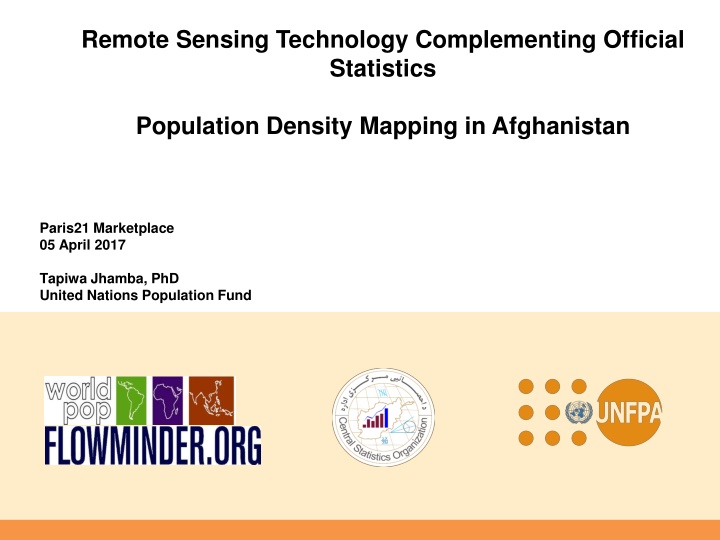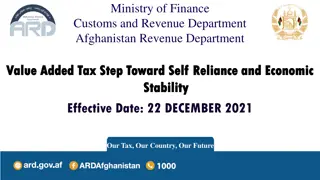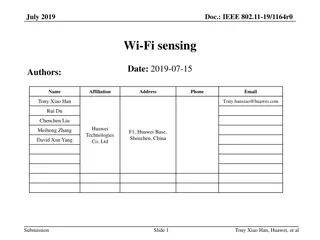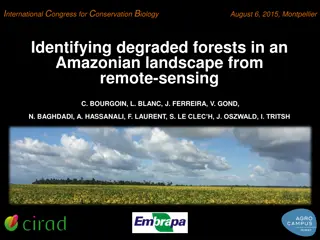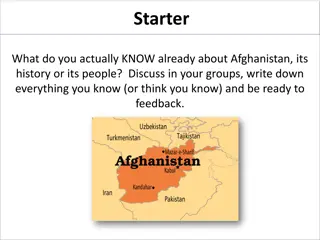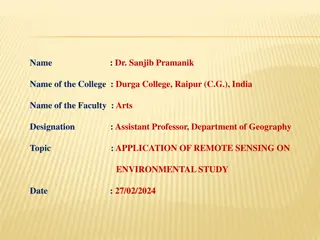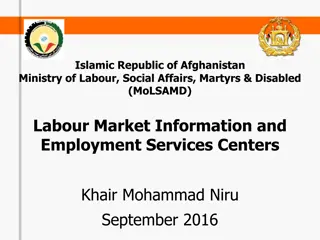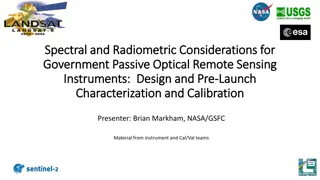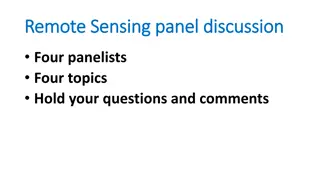Remote Sensing Technology for Population Density Mapping in Afghanistan
Utilizing remote sensing technology to estimate population counts in Afghanistan where a full census is not feasible, this methodology involves statistical modeling with data from surveys, GIS, and satellite imagery. The collaboration between UNFPA, WorldPop/Flowminder, and the Afghanistan National Statistics Office aims to enhance national statistical capacity by providing updated population data essential for achieving the SDGs and the 2030 Agenda. By enumerating populations through surveys, predicting populations in unsurveyed areas, and spatially disaggregating estimates, this approach generates detailed population data crucial for policy-making and sustainable development planning.
Download Presentation

Please find below an Image/Link to download the presentation.
The content on the website is provided AS IS for your information and personal use only. It may not be sold, licensed, or shared on other websites without obtaining consent from the author.If you encounter any issues during the download, it is possible that the publisher has removed the file from their server.
You are allowed to download the files provided on this website for personal or commercial use, subject to the condition that they are used lawfully. All files are the property of their respective owners.
The content on the website is provided AS IS for your information and personal use only. It may not be sold, licensed, or shared on other websites without obtaining consent from the author.
E N D
Presentation Transcript
Remote Sensing Technology Complementing Official Statistics Population Density Mapping in Afghanistan Paris21 Marketplace 05 April 2017 Tapiwa Jhamba, PhD United Nations Population Fund
What is it? An innovative methodology to estimate population counts for a country where a full census is not feasible Statistical modelling requires some data from surveys, GIS data and satellite imagery Partnership of UNFPA, WorldPop/Flowminder, and Afghanistan National Statistics Office 2
How does it lead to strengthening national statistical capacity, and/ contribute to strengthening the SDGs and 2030 Agenda? The last census in Afghanistan was conducted in 1979 andcurrent population estimates are mostly based on that baseline; Generates overall population counts and density data. These can be used to generate SDGs - ~ 96 of indicators require some form of population data 3
How does it work? Core Steps: 1. Enumeration of population with ground-based surveys (SDES & micro-census) 2. Prediction of EA population in un-surveyed areas using statistical models integrating population survey data and ancillary data sets (GIS and satellite imagery) 3. Spatial disaggregation of population estimates Output dataset includes: Population counts at Enumeration Area level; 100mx100m gridded population estimates; Population estimates disaggregated by sex and large age groupings 4
